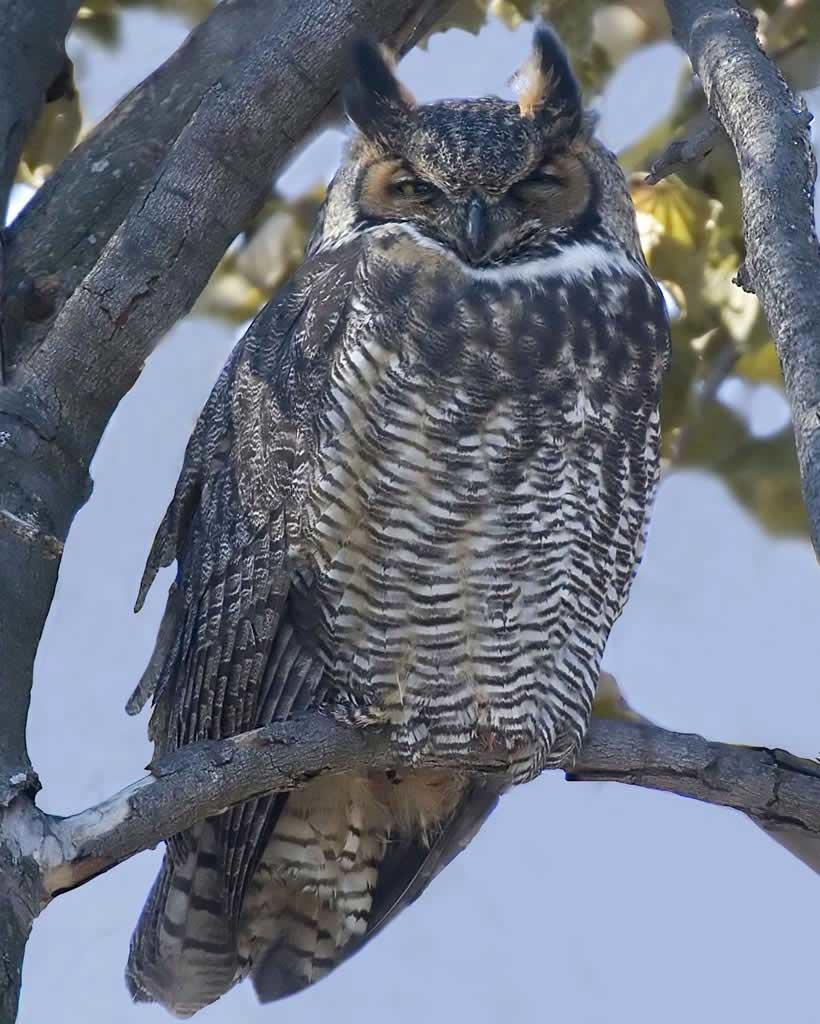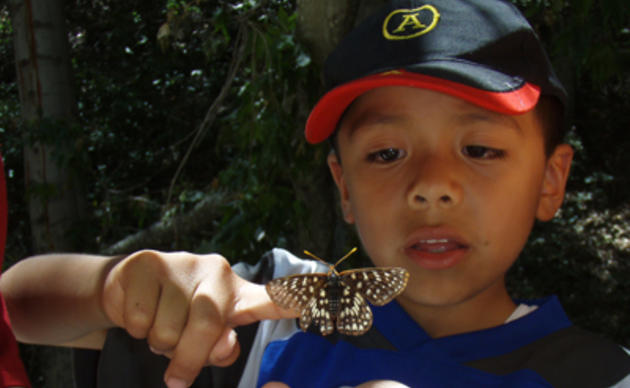
Great Horned Owl
Bubo virginianus
Hoot hoot, what's that sound you've been hearing in the Butterfly Loop? It's a Great Horned Owl watching over her nest up high in the trees. Found almost throughout North America and much of South America is this big owl. Aggressive and powerful in its hunting (sometimes known by nicknames such as "tiger owl"), it takes prey as varied as rabbits, hawks, snakes, and even skunks, and will even attack porcupines, often with fatal results for both prey and predator. Great Horned Owls begin nesting very early in the north, and their deep hoots may be heard rolling across the forest on mid-winter nights.
Feeding Behavior
Hunts mostly at night, sometimes at dusk. Watches from high perch, then swoops down to capture prey in its talons. Has extremely good hearing and good vision in low light conditions. In north in winter, may store uneaten prey, coming back later to thaw out frozen carcass by "incubating" it.
Eggs
2-3, sometimes 1-5, rarely 6. Dull whitish. Incubation mostly by female, 28-35 days. Young: Both parents take part in providing food for young owls. Young may leave nest and climb on nearby branches at 5 weeks, can fly at about 9-10 weeks; tended and fed by parents for up to several months.
Young
Both parents take part in providing food for young owls. Young may leave nest and climb on nearby branches at 5 weeks, can fly at about 9-10 weeks; tended and fed by parents for up to several months.
Diet
Varied, mostly mammals and birds. Mammals make up majority of diet in most regions. Takes many rats, mice, and rabbits, also ground squirrels, opossums, skunks, many others. Eats some birds (especially in north), up to size of geese, ducks, hawks, and smaller owls. Also eats snakes, lizards, frogs, insects, scorpions, rarely fish.
Nesting
May begin nesting very early in north (late winter), possibly so that young will have time to learn hunting skills before next winter begins. In courtship, male performs display flight, also feeds female. Nest: Typically uses old nest of other large bird, such as hawk, eagle, crow, heron, usually 20-60' above ground; also may nest on cliff ledge, in cave, in broken-off tree stump, sometimes on ground. Adds little or no nest material, aside from feathers at times.
Sign-up to receive updates on our events
We send out periodic emails about programs, events, and volunteer opportunities at the Center.




